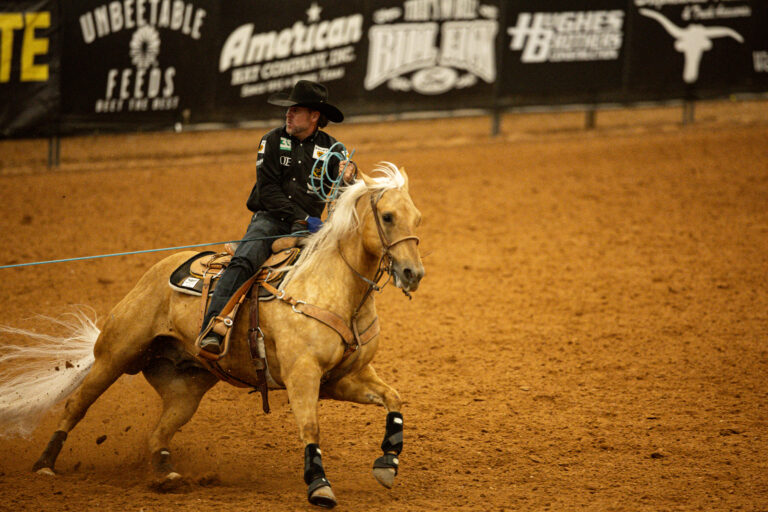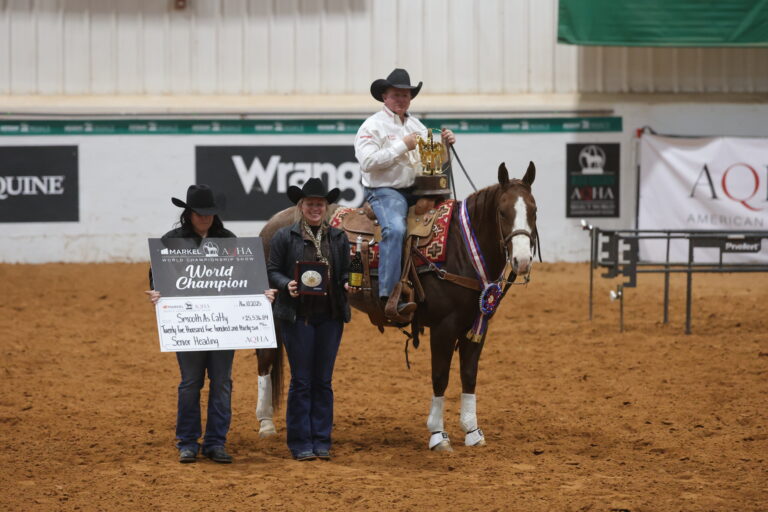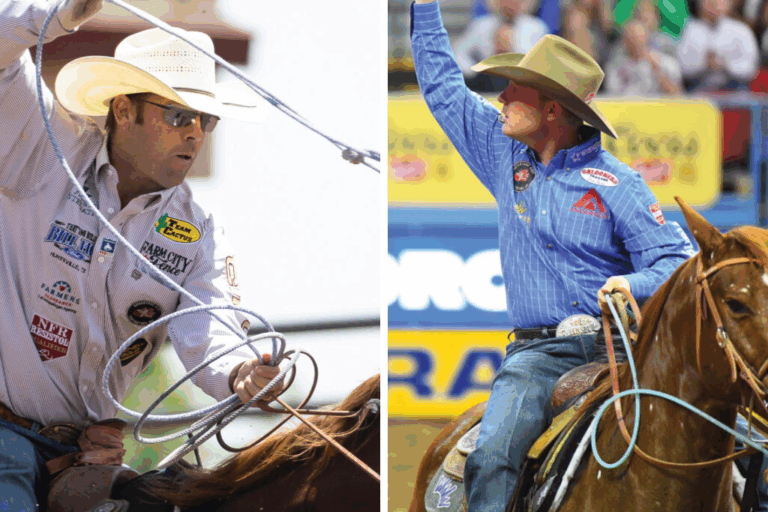Qualifying for the National Finals Rodeo is hard. It’s a year-long grind and roller-coaster ride, complete with all-night-drives exhaustion, slumps when you feel like you can’t buy a break and physical, financial and emotional stress. It’s no wonder the list of world-class team ropers who’ve both headed and heeled at Rodeo’s Super Bowl is short.
Ten cowboys—Bret Beach, Trevor Brazile, Quinn Kesler, David Motes, Walt Rodman, Mark Simon, Clint Summers, Colter Todd, Speed Williams, J.D. Yates, in alphabetical order—have managed to climb this Team Roping Mount Everest since the event became dally only (and has since stayed that way) at the NFR in 1973. Before that, there were many years when the NFR team ropers team tied five rounds and dallied the other five. When it was “half and half,” some teams switched ends every other round to suit their strengths and horses.
ProRodeo Hall of Famer Leo Camarillo owns the record for most NFR team roping average titles with six. He won the first one heeling for Billy Wilson in 1968, and they dallied all 10 runs. The Lion then won three straight NFRs from 1969-71 with cousin Reg when they team tied half the rounds, before striking for two more average crowns in 1980 and ’82 with Tee Woolman in the dally-only days.
Fellow Hall of Famers John Miller and Ace Berry won the last-ever round of NFR team tying in 1972 on their way to that year’s NFR average win, which is also the year Berry doubled down with the NFR bareback riding average victory, as Phil Lyne did in the calf roping and bull riding that same Finals. Berry also won the NFR team roping average in 1967 with Bucky Bradford, when they team tied every other round, and said a number of cowboys, including himself, switched ends during those team tying times.
Another worthy note up front here is that late Hall of Famer Dale Smith—who is one of only two cowboys, the other being Trevor Brazile, to qualify for the National Finals in four events (both have been there heading, heeling, tie-down roping and steer roping)—won his world team roping titles in 1956 and ’57 as a header (aboard his black horse Shady), but later qualified for the Finals as a heeler on another well-known black horse he called Big Whiz. Team roping trivia buffs might also be interested to know that Smith had a strong hand in getting the rule passed that allows ropers over 50 to tie on at the rodeos.
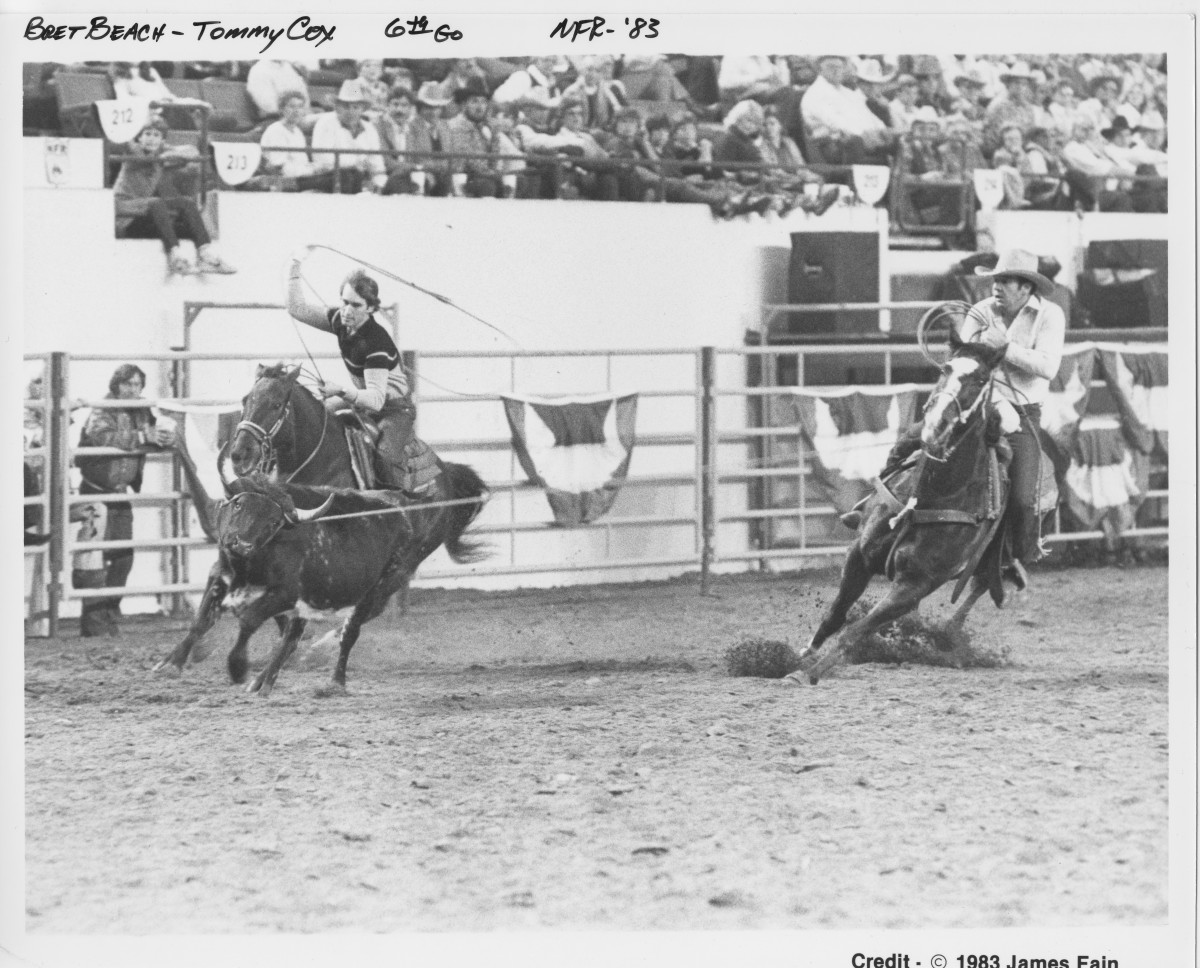
Bret Beach
Bret Beach headed for Clay O’Brien Cooper at the Finals in 1981 and ’82 before Beach heeled for Tommy Cox at the 1983 NFR. Beach and Cooper, who were brothers-in-law, also won the 1982 BFI.
“I was probably more of a heeler who headed,” Beach said. “There were situations involved with a lot of the guys on this list. In my case, the only reason I headed for Clay was because he out-heeled me and it was my best shot at winning. I used to switch off all the time. Most people coming up now work to perfect one end and never switch over. It’s so hard to win that they go with their strength and stay in their comfort zone.
[READ MORE: Beach and Cooper Win 1982 BFI in the Mud]
“I’m proud to be on such a short and prestigious list. But let me promise you there are guys today who could make the Finals at both ends. I guarantee you Jade Corkill could make it heading and Kaleb Driggers could make it heeling—no brainer—if they decided to do it. But why would two of the best-evers at their respective ends do that? You have to be so unbelievably excellent at the end you do now that that’s everybody’s focus. You don’t see guys floating around and back and forth, like I did it, now. You have to be so good at your end today to succeed that you really can’t spend much time doing anything else. You have to be all-in on one end. It’s a career change to switch ends, and that means horse, rope, mentality and partner changes.”
Trevor Brazile
Trevor Brazile owns 24 gold buckles and has earned a record 52 National Finals qualifications, a milestone that will stretch to 53 when he competes at this year’s National Finals Steer Roping. Trevor has team roped at the Finals 15 times—the first one heeling for J.P. Wickett in 1998, and the rest as a header. The last was at the 2015 NFR with Patrick Smith. Why the switch after that first Finals?
[READ MORE: 6 Steps to Heading with Trevor Brazile]
“I did too many events to heel,” Brazile said. “Working three events, I needed to do the entering, and that’s typically a header’s job. I also had more freedom as a header, and heelers are a little easier to find than headers. The year I made it heeling, I had a head horse and a heel horse. The winter rodeos were rolling around, and I felt like J.P. was my best option. So I heeled.
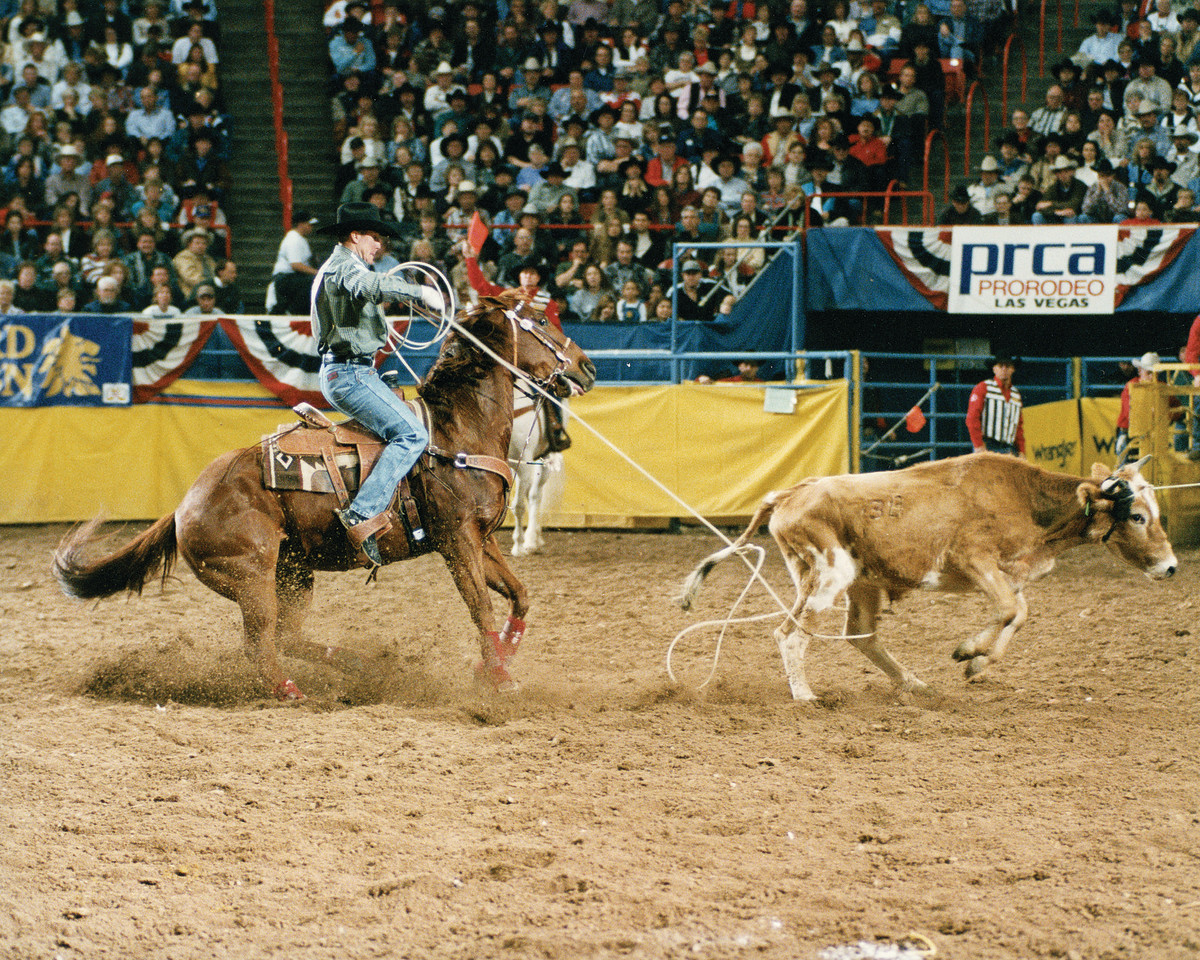
“I’ve always liked heeling better. I heeled more than I headed growing up. We didn’t have an arena when I was a kid, but I could always heel something. I roped more goats as a kid than I ever did steers. It’s hard to become a header without an arena and steers.”
It’s unanimous that there are more elite heelers than headers.
[READ MORE: Trevor Brazile Wins the 2015 Timed Event Championship]
“You can take a really good header, match him with multiple heelers and get the same results and success rate,” Brazile noted. “You can take a really good heeler and if he’s not roping with one of the top five or so headers there’s not a lot he can do about having that same success rate. I can basically tell you which heelers are going to be in the top five at the end of the regular season by who they’re heeling for. Head horses are the same way. If you take a career-building horse out from under a top header, he’s not the same guy.
“Heelers are helpless other than doing their job. And you only get to do your job when the guy you picked to head for you does his really well. On the plus side, two heel horses will get you through a 20-year career, when that’s more like 20 head horses if you’re heading. But heading suited my strengths better. It involved scoring sharp, which I already had to do in the other events. The horsemanship also kicked in more in my favor on the heading side. Head horses are harder to find, and that was one thing I could make. It just made more sense.”
Brazile sees this short list staying that way.
“It’s hard to make it at both ends, especially nowadays,” he said. “Say you’re a Top 15 header and you want to become a heeler. You now have to start from scratch at the bottom again, because you’re not qualified for any of the limited rodeos in the heeling. It’d absolutely be harder to do now. Once you get into the partner clicks, have good enough horses to be in the Top 15 and everything’s going your way, why would you switch and make things harder on yourself? You’d have to jeopardize being at the top of the game to try it.”
[READ MORE: The Score Season 1, Episode 2 with Trevor Brazile]
Is the Cowboy King proud to make this particular short list?
“Heck yeah,” Trevor said. “I’m very proud of it. It’s a small group, and I set out to be a cowboy and not just labeled as an event guy. I love being versatile, even within one event.”
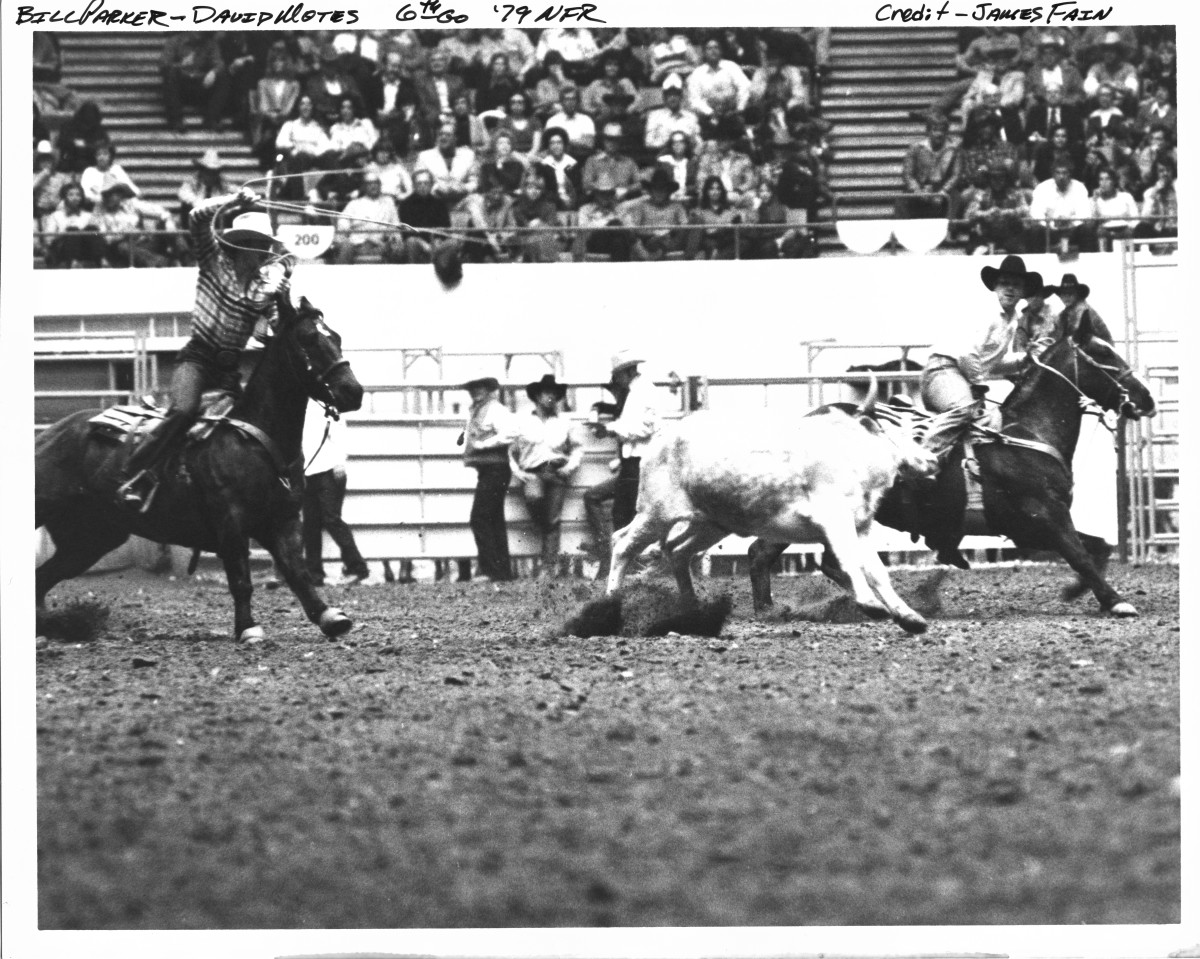
David Motes
David Motes has roped at 22 NFRs. David headed for his brother Dennis—with whom Pard won the 1977 world team roping title—in 1973. The only time David didn’t head at the Finals was in 1979, when he heeled for Bill Parker.
“I heeled a lot growing up,” David said. “It was my dream to heel. But I had a hard time getting guys to head for me. I guess I wasn’t quite as good as I thought I was. My heading percentages were better, so that was my best shot when it came to making a living.
“The best ropers all know how to rope both ends pretty good. To be able to do that good enough to rope at the Finals both ways is a big deal. There are so many guys who rope great now that just making it at one end is extremely tough. There are so many phenomenal ropers at both ends now, but I’m pretty sure it’ll always be a pretty exclusive club. I’m proud to be a part of it. I know what dedication it takes—roping and horsepower—to rope at the big show at both ends.”
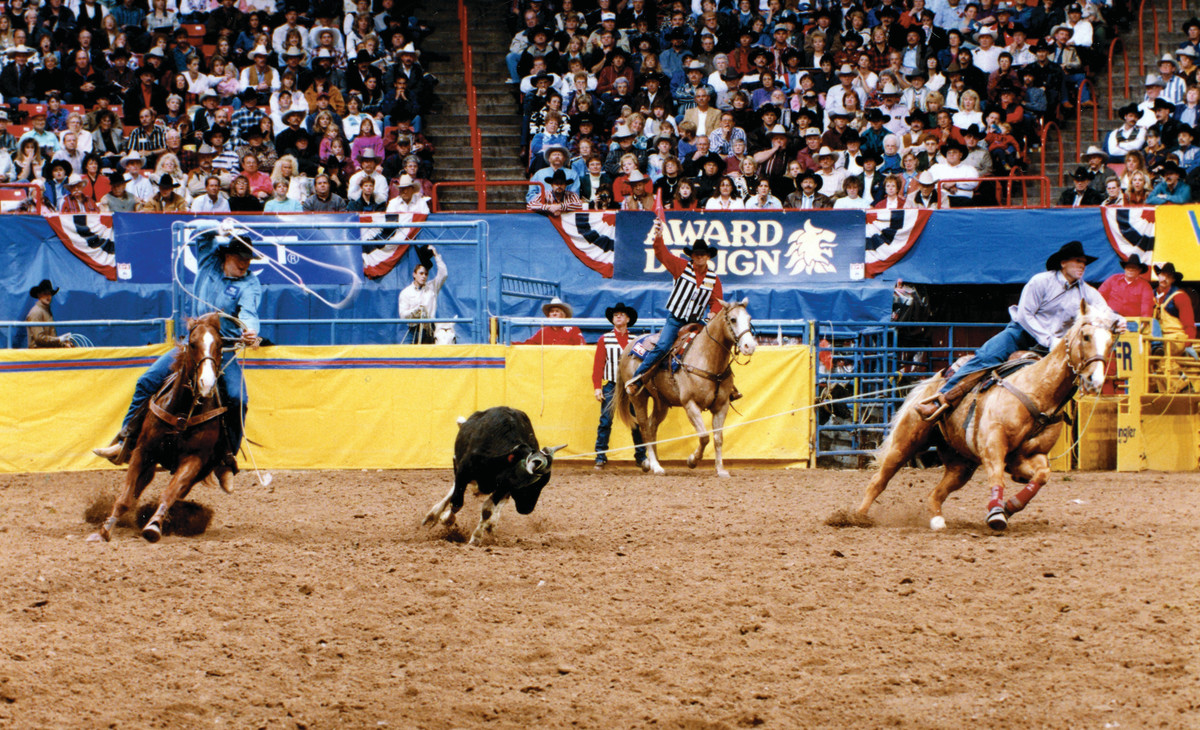
Walt Rodman
Walt Rodman heeled for Bret Boatright at the Finals in 1984, Craig Hamilton in 1987 and Liddon Cowden in 1990. Then Rodman crossed over and headed for Kyle Lockett at the 1997 NFR.
“It’s a heck of a commitment to switch ends at the highest level,” Rodman said. “Especially if you heeled first, because it’s harder to keep a string of good head horses. When I was heeling, there were always five or six elite headers, and if you didn’t have one of them you struggled as a heeler. There was an overabundance of heelers who could catch two feet, but if they didn’t have one of the top headers they stayed back in the pack.
“I finally thought I could head good enough. I thought I could do it, and wanted to see if I could. But it was a challenge. Looking back now, I’m proud to be a part of this and there’s a lot of self-satisfaction to it. At the time, I just loved to rope.
“I think it’ll be harder to get it done at both ends in the future. A lot of guys can rope both ends, but to be elite today looks a heck of a lot tougher to me. When I think of sports—golf, baseball, rodeo—I don’t think it’s fair to compare eras. There are greats in every era, conditions change and sports evolve. Just because Kaleb Driggers ropes great today does not mean Jimmy Rodriguez didn’t rope great in his day. You can never take anything away from the greats who came before us.”
Mark Simon
Mark Simon heeled for his little brother, Jay, at his first Finals in 1980. He headed for Bret Tonozzi at the NFR in 1990 and ’92, when they won the average. Simon also headed for K.C. Jones in 1991, and finished 1994 the reserve world champion header after roping with Rich Skelton at the Finals.
“Yes, I was the first loser on the heading side when Jake and Clay set the record on 10,” Simon smiled of the year Barnes and O’Brien Cooper also won their seventh world titles as a team. “When I was little—until I was 15 or 16—I headed. I actually made the Finals when I was 13 or 14, and was going to head for Corky Warren, but my dad didn’t think I had any business roping there against the men and he was right. But my brother and both sisters headed, so we needed a heeler at home. That was about the time Clay moved from California to Arizona at 16, and lived about a half a mile from us. I roped calves and heeled. I wanted to be like Leo and Mike Beers.
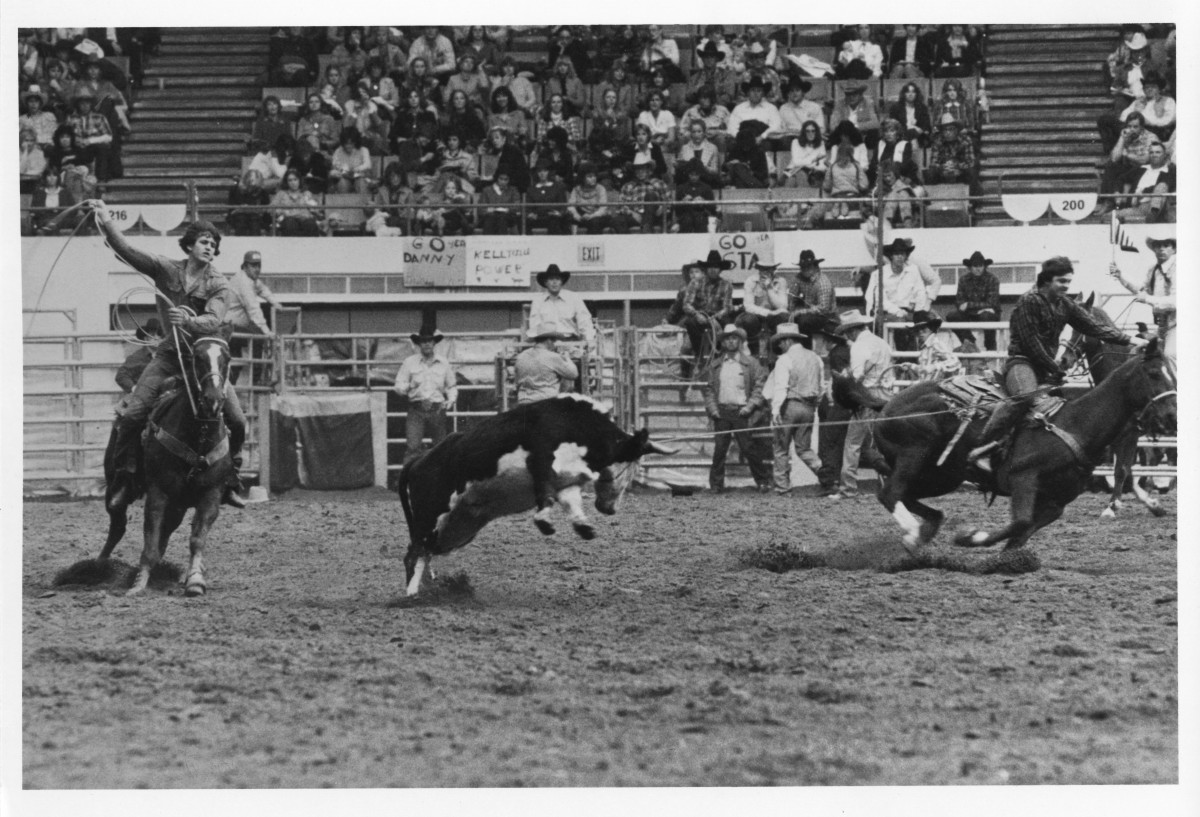
“How I started heading was I had a head horse I’d started that I was going to show to Jake, so I asked my lifelong friend Bret Tonozzi to come heel some for me, so I could sharpen up his facing. Bret told me if I’d keep that horse (Zeke), he’d rope with me. It’d been a long time since I’d roped horns, but that’s the easy part of heading. I rode a horse we called Carl Lewis at four NFRs, from 1991-94, that Jake rode there in 1996. That horse was 25 when I rode him at the Finals in 1994. Had (Bret’s dad) Tony Tonozzi not helped me with horses, I don’t know how far I could have made it as a header.”
Simon says he finished 16 in the world four times in the team roping and twice in the tie-down.
“In all honesty, if I had it to do over again, I’d rope calves,” said Simon, who notes that he and Jay placed in five rounds at the 1980 NFR and won $2,000 apiece total. “I roped calves better than I team roped, and calf roping was the love of my life. But if you team rope, your first priority has to be to your partner. The only year I got to rope calves and team rope was when I roped with K.C. Jones in 1991, because he worked more than one event, too. Heading and heeling have a different set of requirements, but the header pretty much dictates everything, so that fit my personality. I like being in charge. And good head horses are like good race horses—they make everybody look good.
“I always roped for a living and was in it for the money. It wasn’t until about the time I quit rodeoing that they started having equal money in the team roping. Another thing a lot of people don’t remember is that they only paid four moneys at the Finals for a long time. A lot of guys left there without any money. I think the bottom line about roping both ends is that it doesn’t hurt anyone to do it, so you understand what that other guy is going through and can be the best possible partner.”
Speed Williams
Speed Williams roped at NFR 16s, the first heeling for Casey Cox in 1988 and the rest over on the heading side. ProRodeo Hall of Famers Speed and Rich won eight-straight world team roping titles between 1997 and 2004.
“I grew up heeling,” said the winningest header of all time. “I thought that was the ultimate as a kid growing up, and that heeling controlled everything. Then when I was at my first National Finals, I roped a dummy with all the NFR headers. That’s when I realized there was more room for improvement on the heading side versus the heeling.
[READ MORE: 5 Ways Speed Williams is Changing Dustin Egusquiza’s Team Roping Heading Game]
“When I came along, the NFR had just moved to the Thomas & Mack (in 1985), so the best headers hadn’t yet perfected roping in that small arena. When roping was mostly out West, it was in big arenas over longer scores. It was like going from a three-point play during the regular season to a dunk when they moved the Finals to Vegas. I went home after the 1988 NFR and told my dad I was going to head. It took me a couple years to convince him. But remember, I grew up back East, where we roped in basketball-court-sized arenas all the time. That was a huge advantage when we got to the Thomas & Mack.
[READ MORE: #WINNING with Bobbi Williams]
“There’s no way I would have dominated without that move to that little building. How many world titles would Charles Pogue have had if the NFR had stayed in OKC, as just one example. Charles and Scooter were unstoppable all year long. Matt Tyler, too. They were both disciplined guys who dominated over long scores and at jackpots, because they always had great horses and did not make many mistakes.”
Asked if it’s easier to head or heel at the Thomas & Mack, Speed said, “That depends who you’re heeling for. Guys who can reach, then set steers up and hop them off make their heelers look good. If you go back and watch which heelers have struggled in that building, it almost always goes back to the head horse they were roping behind. Head horses that either come back up the wall too hard or step down the arena too much are devastating to heelers trying to ride to the end and throw.
“I’m amazed at how many young kids today don’t know I can heel. I was a heeler at heart who grew up heeling. It was very hard to switch to heading, because Clay was my hero. But I knew there was potential for huge improvement on the heading side. As for how hard it’ll be to join this little switchender club in the future, I think the fact that it’s been awhile since anyone did it answers that question. We haven’t had any new members since Trevor made it heading (in 2003).”’
J.D. Yates
J.D. Yates has team roped at the NFR 21 times. His first time was heeling for Daddy Dick in 1975, when at 15 he became the youngest NFR qualifier of all time. He roped with Dick 13 times and heeled at the Finals a total of 19 times. J.D. headed twice—in 1996 for cousin Jay Wadhams, and in 2002, when Yates and Bobby Harris won the NFR average.
“I wasn’t a very good reacher, so the key to heading for me was having a good horse,” J.D. said. “I started heading at the rodeos, because I was heading a lot at the horse shows, Jay wanted to go to the rodeos when we had down time and he heeled. I’ve always kept making head horses. Then (J.D.’s son) Trey came along, and I roped with him until he got out of college, while he was getting going. I’ve enjoyed the process of heading after being a heeler so long.
[READ MORE: Game Plan with J.D. Yates]
[LISTEN: The Score Season 1, Episode 9 with Trey and J.D. Yates]
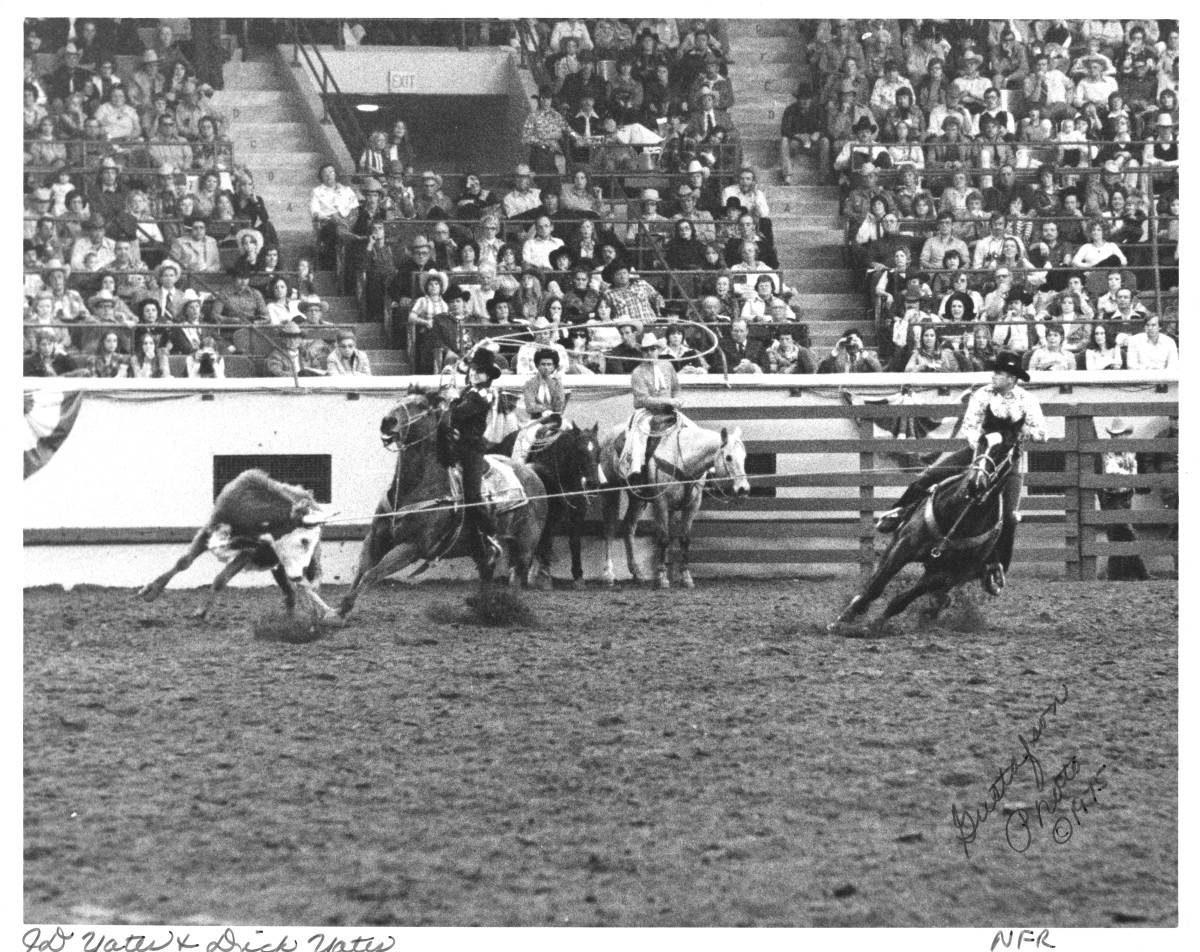
“There are a lot of people who can darn sure rope both ends good. But not a lot of them have the desire to go a different direction once they figure out how to max out at one end and have success at that end. It takes a lot of work to get good enough at that second end. It really is kind of like starting over. Being successful at the highest level is a process, and it’s a tough one. I wanted to prove to myself that I could do it, so there’s a lot of satisfaction in that for me.
[READ MORE: J.D. Yates’ Hackamore Secrets]
“I wouldn’t trade my 19 years of heeling for anything in the world. I worked hard at it, and I enjoyed it. I’m not saying I don’t enjoy heading, but I can say it was and still is a lot more frustrating than my heeling ever was. I still enjoy going back and heeling. I think it’ll be awhile before you see many guys trying to make that big change. A point I would like to make is that when people talk about how tough team roping is today they aren’t factoring in all the facts. The times are faster today, but the steers are 200 pounds lighter, the scores are shorter and the ropes are smaller, lighter and better. There have been a great set of ropers all along—just not all that many of them who tried to making a living roping both ends.”







